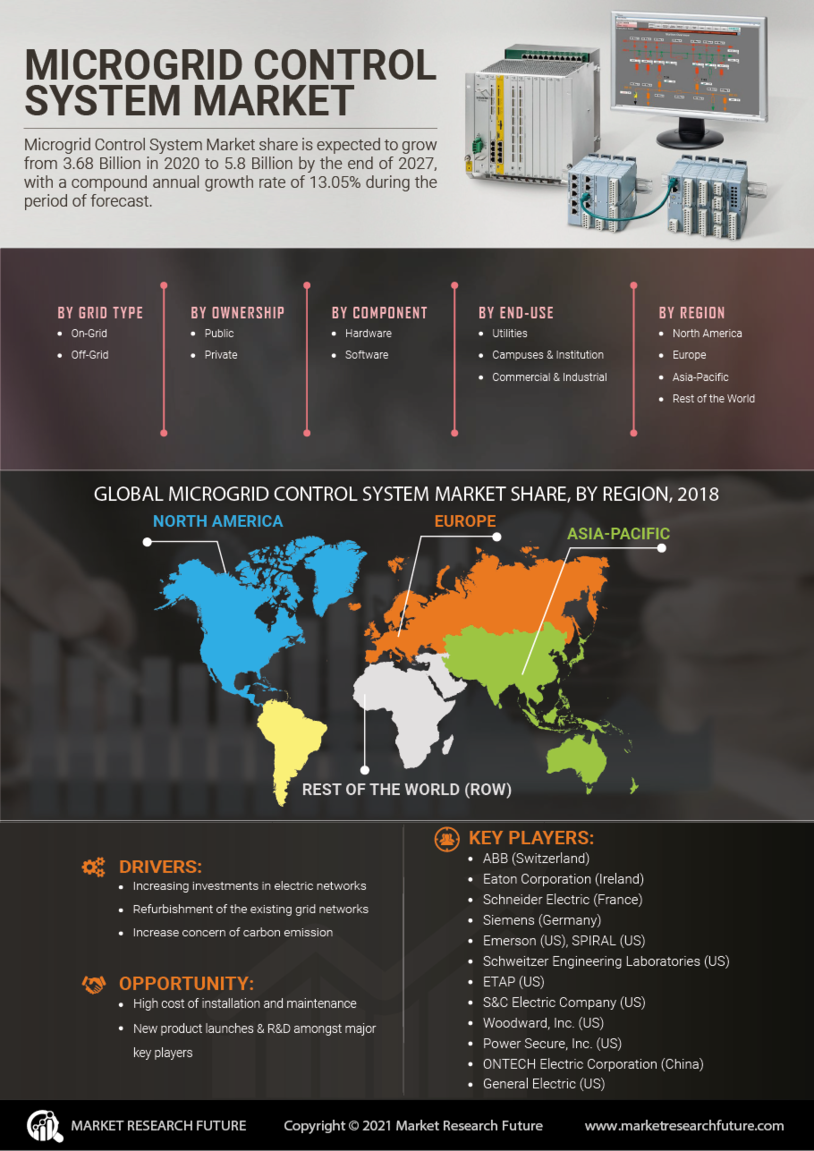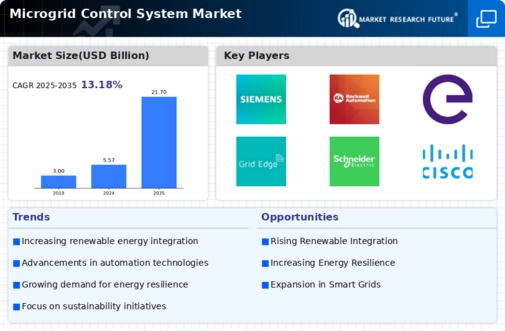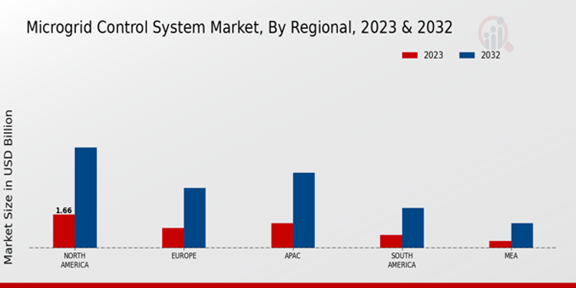Market Growth Projections
The Global Microgrid Control System Market Industry is poised for substantial growth, with projections indicating a market size of 5.57 USD Billion in 2024 and an anticipated increase to 21.7 USD Billion by 2035. This growth trajectory reflects a compound annual growth rate of 13.18% from 2025 to 2035. The increasing adoption of microgrid technologies across various sectors, including residential, commercial, and industrial applications, contributes to this upward trend. As stakeholders recognize the benefits of microgrids in enhancing energy resilience and sustainability, the market is likely to witness robust expansion in the coming years.
Rising Energy Security Concerns
Rising energy security concerns are increasingly influencing the Global Microgrid Control System Market Industry. As geopolitical tensions and climate change impacts threaten traditional energy supply chains, the need for localized energy solutions becomes more pronounced. Microgrids offer a viable alternative by enabling communities to generate and manage their energy independently. This shift towards energy independence is particularly relevant in remote and underserved areas, where access to reliable power is critical. The growing recognition of microgrids as a solution to enhance energy security is likely to drive market growth, as stakeholders seek to mitigate risks associated with centralized energy systems.
Government Initiatives and Funding
Government initiatives and funding are pivotal in advancing the Global Microgrid Control System Market Industry. Various countries are implementing policies that promote the development and deployment of microgrid technologies. For example, the United States Department of Energy has allocated substantial resources to support microgrid projects, aiming to enhance energy resilience and security. Such initiatives not only provide financial backing but also create a favorable regulatory environment for microgrid implementation. As a result, the market is anticipated to grow significantly, reaching an estimated 21.7 USD Billion by 2035, driven by increased public and private investments in microgrid infrastructure.
Increased Urbanization and Electrification
Increased urbanization and electrification are significant drivers of the Global Microgrid Control System Market Industry. As urban populations expand, the demand for reliable and efficient energy solutions intensifies. Microgrids provide a flexible approach to meet the energy needs of densely populated areas, integrating various energy sources and improving resilience against outages. Furthermore, electrification initiatives in developing regions highlight the potential of microgrids to provide sustainable energy access. The convergence of urbanization and electrification trends is expected to propel market growth, as cities increasingly adopt microgrid solutions to enhance their energy infrastructure.
Technological Advancements in Control Systems
Technological advancements play a crucial role in shaping the Global Microgrid Control System Market Industry. Innovations in automation, artificial intelligence, and data analytics enhance the efficiency and reliability of microgrid operations. These advancements enable real-time monitoring and control, optimizing energy distribution and consumption. For instance, smart grid technologies allow for better demand response and load management. As these technologies evolve, they are expected to drive market growth significantly, with projections indicating a compound annual growth rate of 13.18% from 2025 to 2035. This growth trajectory underscores the importance of integrating cutting-edge technologies into microgrid control systems.
Growing Demand for Renewable Energy Integration
The Global Microgrid Control System Market Industry experiences a surge in demand for renewable energy integration. As nations strive to meet sustainability goals, the integration of solar, wind, and other renewable sources into microgrids becomes paramount. This trend is particularly evident in regions such as Europe and North America, where government policies favor clean energy adoption. The market is projected to reach 5.57 USD Billion in 2024, reflecting the increasing reliance on decentralized energy systems. The emphasis on reducing carbon footprints and enhancing energy security further propels the growth of microgrid control systems, which facilitate the seamless operation of diverse energy sources.
















